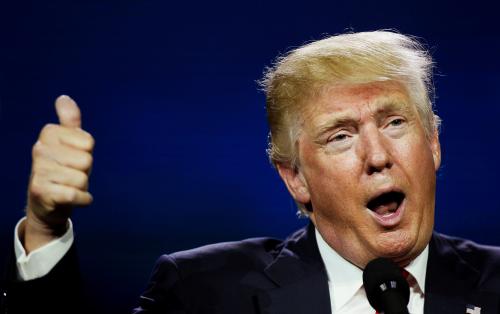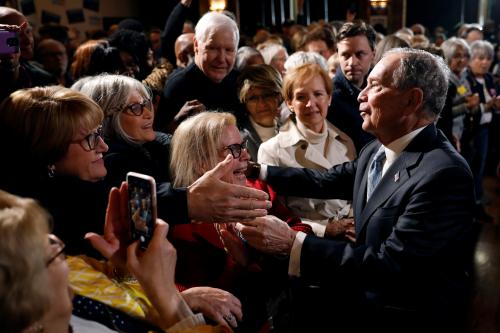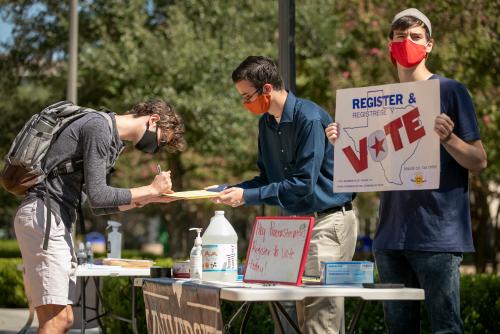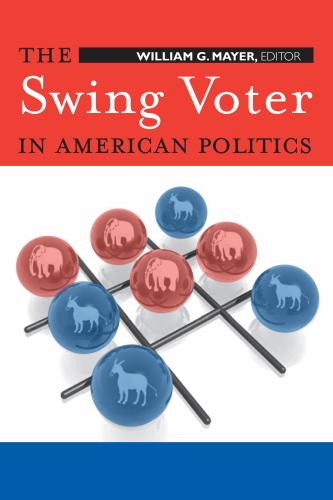My reliably conservative state is steadily growing more competitive—the state favored Romney to Obama by 16 percentage points in 2012, but Trump’s advantage over Clinton was just 9 percentage points in 2016. In 2018, Republican Senator Ted Cruz held off a challenge by Democrat Beto O’Rourke, but the margin was just 2.6 percentage points. For a state that hadn’t seen a Democrat win statewide in over 30 years, this was stunning. Also, Texas is destined to pick up two or three seats after the next census, making us an even bigger electoral prize. Will the Democratic Party make a serious play for the state? That remains to be seen. The payoff could be huge, but the cost is also immense. Multiple, expensive media markets and a sprawling electorate mean that a campaign needs money, organization, and a massive volunteer effort to reach potential voters and GOTV.
Looking to Super Tuesday, the most interesting action is on the Democratic side. Texas Democrats are facing choices over which candidate is best suited to take on incumbent Senator John Cornyn and President Donald Trump. Texas Democrats will contribute 228 delegates to presidential nominees, second only to California in the states that have cast ballots at this point. But, the road forward for the Texas Democrats is not clear, and Texas’s political future is best described as a “choose your own adventure.”
The first path forward for Texas Democrats centers on Latinos, and in particular on low-turnout areas of the state. This road also pulls in young voters, many of whom are Latino. This strategy relies on candidates and campaigns that can inspire people who haven’t been engaged in politics before to register and vote. As Democrats often say, “Texas isn’t a red state, it’s a non-voting state.” This was Beto O’Rourke’s constant refrain in his almost but not quite enough run against Ted Cruz in the last election. Nationally, you may see O’Rourke as a failed Senate and presidential candidate (yes, we saw that too) but Texans also saw an extraordinary political campaign that energized Democrats and helped flip down-ballot races. Will any campaign in 2020 generate similar enthusiasm? The Sanders campaign clearly sees itself in that lane.
Bernie Sanders and Joe Biden are tied in what little polling we have in this state. The Sanders campaign has shown strength among younger voters, new voters and Latino voters—all groups that are vital to an expand the map playbook. His health care message also addresses the concerns of many Texans. Texas is one of only 14 states to reject the Medicaid expansion. In a state with high maternal mortality and where many lack insurance, Sanders’ message is particularly potent among many Texas Democrats.
But there is another road to change in Texas politics, and this path leads through the immense (and still growing) suburbs of Texas. The 2018 midterm saw two House seats flip in districts around Dallas and Houston, with former professional football player Colin Allred defeating the Republican incumbent Pete Sessions in the 32nd District in north Dallas and Lizzie Fletcher taking down John Culberson in Houston’s 7th district.
The Democratic Congressional Campaign Committee (DCCC) currently lists 6 GOP-held seats in Texas among their 33 targeted seats to flip—more than any other state.
Texas suburbs, and suburban women in particular, are thought to be increasingly receptive to the Democrats’ focus on health care. The president’s style of pugnacious politics is also off-putting to some suburban voters. Donald Trump is not especially popular in Texas. A February 2020 Texas poll showed him underwater with 48% disapproval to 45% approval with 7% neutral or having no opinion.
But the suburban route to political change in Texas is thought to favor more moderate Democrats. Texas House Democrats have gone on record saying that Sanders at the top of the ticket would harm their chances down ballot. Republicans in this state have won for decades on a decidedly conservative, small government message. So, corruption charges, a growing deficit, and perhaps, a sinking economy might further weaken the Republican monopoly on Texas politics. But older Democrats worry that a Sanders platform that includes a massive overhaul of health care, free college and a raised minimum wage are several bridges too far for many Texans. It’s also worth noting that Texas is abandoning the straight ticket voting option in November, which two-thirds of us used in 2018. It’s going to be harder for down ballot candidates to attract voters.
But returning to the primary, keep in mind that we have early voting. What you see on Super Tuesday might not reflect the last debate, the results from South Carolina, and the latest media cycle. We’ve been voting since last Monday, and our early numbers show higher turnout than 2016. Are we going to continue to outperform, or are we just getting it out of the way? My guess is that in these polarized times, it’s the former. Still, remember as you watch the polls and campaign maneuverings, many of us have our votes behind us. That means that even if Joe Biden gets a lift from South Carolina, many Texan Democratic primary voters will already have cast their votes.









Commentary
Hoping to flip Texas, Democrats look to the suburbs on Super Tuesday
February 28, 2020